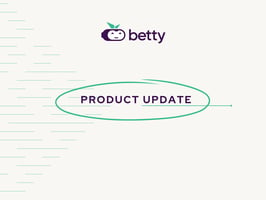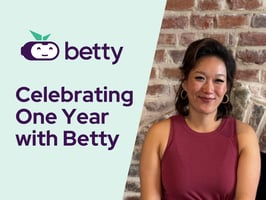Every few weeks, we roll out improvements designed to make managing your Betty and understanding...
Associations have long been the stewards of industry knowledge. From curating research to bringing together experts, and capturing insights that shape professions and policy. But in today’s fast-moving, digital-first world, knowledge alone isn’t enough. Members want value: timely answers, relevant resources, and actionable insights that help them grow, connect, and lead.
The challenge? Much of an association’s knowledge is locked away or scattered across systems, buried in documents, or siloed within departments. And even when it’s accessible, it’s often hard to navigate or apply.
To truly serve their members, associations must rethink how they manage and mobilize knowledge. That means moving from storage to strategy, from content to context, and from information to impact.
Step 1: Make Knowledge Discoverable
Associations often underestimate how much valuable content they already have. But if members can’t find it, or don’t know it exists, it’s as good as lost.
The first step is to centralize and structure that knowledge. This doesn’t mean migrating everything into one system but rather creating a layer of intelligence that connects content across platforms. Think of it as building a “knowledge mesh” that spans SharePoint, Teams, email archives, and member portals.
With the right tools, associations can:
- Index and tag content by topic, audience, and relevance.
- Summarize long-form documents into key takeaways.
- Enable natural-language search that understands member intent.
When knowledge becomes discoverable, it becomes usable. Betty can be an association's best friend when centralizing and structuring your content. Once Betty is trained on all your knowledge, there is no need for indexing or tagging because Betty will surface relevant content based on contextual information, not based on the accuracy of tags.
Step 2: Break Down Silos
Knowledge silos aren’t just a tech problem, they’re a cultural one. When departments operate in isolation, valuable insights get trapped. Staff may know where things are, but members, and even colleagues, don’t.
Breaking this cycle requires both technology and mindset. Associations can foster cross-functional collaboration by:
- Creating shared spaces for documentation and insights.
- Encouraging staff to annotate and contextualize resources.
- Using AI to surface connections between disparate pieces of content.
The goal isn’t just access, it’s alignment. When everyone sees the same picture, they can move faster and serve better. Many groups are leveraging Betty as their internal tool. They have been using process documents and other resources that their staff using everyday to train Betty and then everyone on the team has the ability to ask questions about their role to do it more efficiently.
Step 3: Activate the Network Effect
Associations aren’t just content creators, they thrive bringing people together. Their greatest asset is the collective intelligence of their members.
To unlock that value, associations must create spaces where members can contribute, collaborate, and co-create. That means:
- Capturing insights from events, forums, and conversations.
- Elevating member-generated content, like case studies, toolkits, and success stories.
- Using AI to moderate, summarize, and connect contributions.
When members see their knowledge reflected and amplified, they engage more deeply. And when others benefit from those insights, the whole network grows stronger. Some Betty customers are doing just this. They are connecting their Betty into their online communities to be able to point users to a conversation that may be helpful based on what they are asking her.
Step 4: Personalize the Experience
Not all members need the same thing. A new member might want onboarding resources; a seasoned professional might seek policy updates or leadership opportunities.
Personalization isn’t just about content, it’s about timing, format, and relevance. Associations can deliver more value by:
- Mapping member journeys and tailoring touch points.
- Recommending resources based on behavior and interests.
This kind of precision doesn’t just improve satisfaction, it drives retention and impact. When someone asks Betty about your standards documents, she references those documents and then gives them other information that is similar. Sort of like when you watch Seinfeld and then Netflix recommends four more sit-coms!
Empowering Members with Smarter Systems
As associations evolve, so must the systems that support them. Platforms like Betty are helping associations move beyond static content libraries toward dynamic, member-centered knowledge ecosystems. By connecting tools, surfacing insights, and enabling smarter workflows, these systems empower staff to serve more effectively and members to engage more meaningfully. The result is not just better access to information, but a stronger sense of connection, relevance, and value.
The associations I’ve gotten to work with in my 6 weeks so far with Betty – even in the early to mid-phases of onboarding, I can sense the shift and impact that leaders know implementing an AI Assistant like Betty will have on everybody from staff to members.
The Future of Association Knowledge
We’re entering an era where knowledge is dynamic. It’s not just stored, it’s surfaced, shaped, and shared in real time. AI plays a key role in this transformation, not by replacing human expertise, but by enhancing it, making it easier to find, connect, and act on what matters.
For associations, this is a moment of opportunity. By reimagining how they manage knowledge, they can deepen member relationships, accelerate innovation, and fulfill their mission in new ways.
The question isn’t whether associations have the knowledge. It’s whether they’re ready to turn it into value.
.png?width=173&height=70&name=Betty_RGB%201%20(1).png)




